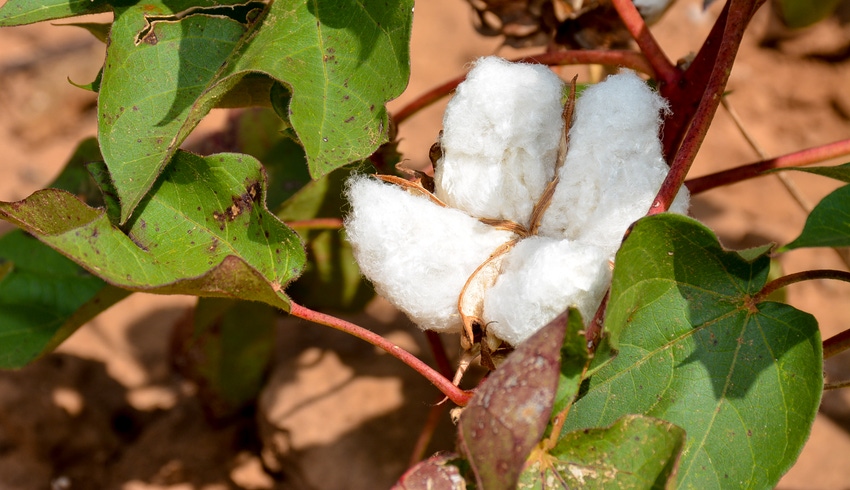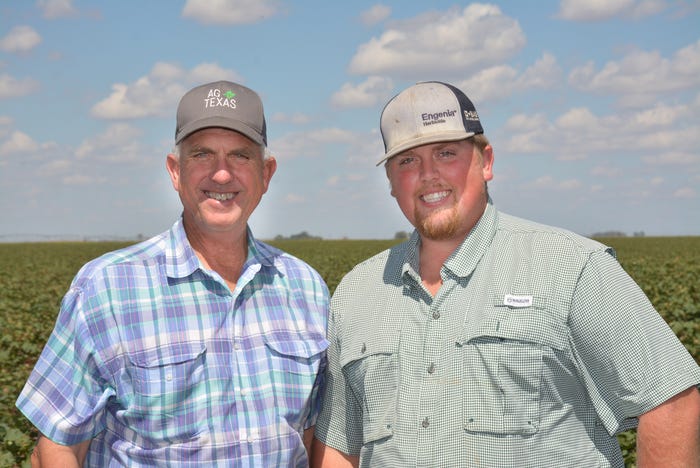
To increase efficiency and concentrate their limited irrigation from a declining Ogallala Aquifer, Plainview, Texas, growers Glenn Schur and his son Layton have installed sub-surface drip irrigation on 60 acres of their best land but under one of their weaker-water center pivots.
On a farm that had enough water to furrow-irrigate in the 1980s and later with a center pivot, Glenn says because of the efficiency of drip along with other tools they use, “we’ll be drip-irrigating here for a long time even though the pivot will probably be gone.”

While Glenn admits cotton is his bread and butter, he knows he can’t continuously grow it, even in drip. “I plant a third of the field in corn and then a section will have two years of cotton and then we’ll rotate with the corn. So, we’re rotating a third of it every year.”
TAWC PARTNERSHIP
To get the maximum water use out of their irrigation, Glenn and Layton participate in the Texas Alliance for Water Conservation (TAWC) project. TAWC partners with growers to create on-farm demonstrations of cropping and livestock systems to compare the production practices, technologies, and systems that can maintain individual farm profitability while improving water use efficiency, according to TAWC. The goal of the project is to extend the life of the Ogallala Aquifer while maintaining the viability of local farms and communities.
See, Depleting aquifer prompts father, son to make some changes
One of the tools the Schurs have adopted through the project is the use of PET (Potential Evapotranspiration), values that indicate the amount of water that has been lost and needs to be replaced through rainfall or irrigation. The Schurs use this information to determine how much water to apply through their center pivots and drip system.
“It takes me about a week to get across the whole field [of drip]. I apply an inch and a half in each of these four sections every week. We concentrate the water. We give it lots of volume and then it dries out,” explains Glenn, who is also TAWC producer board chairman.
According to TAWC Project Director Rick Kellison, Lubbock, Texas, if a grower is putting on a small amount of water and has a lot of water demand from the crop or the environment, because he isn’t wetting a big area the crop is forced to utilize the nutrients and water from the small area.
“Glenn is putting on larger amounts of water less frequently. He’s probably using the same water he would otherwise, he’s just delivering it in a different method. By putting on more water, he’s wetting a bigger volume of soil, which is making his root system bigger and better and he’s able to utilize more nutrients out of larger volumes. When he gets a rainwater event, he’s got the system to take advantage of that rainfall, as compared to only wetting a small area.”
TAWC also recommends and the Schurs use moisture probes. “Even though we track ET, we still use a soil moisture probe because with drip it’s easy to over irrigate, so I watch it closely,” Glenn says. He also uses moisture probes in his non-drip fields.
Several good brands of moisture probes are available, but Glenn says the main thing is that growers use them and “adapt their irrigation to what they’re telling you.”
DRIP DOWNFALL
Sub-surface drip can be the most efficient irrigation system, but it is also costly, about $1200-$1600 per acre and has its challenges, admits Glenn. “The only downfall is you’ve got to have moisture from the top to get the crop up.” When asked how he manages that in a year of drought like 2017/2018, he says, “You pray for rain.
“We’ve had good luck getting ours up. I’ve gone back to some conventional farming where we’ll furrow it up, and then when it comes time to plant we’ll irrigate it and then flatten everything back out and the water will come straight up to the top.”
VALUABLE DATA
Through his partnership with TAWC, Glenn says the water data he’s received have been vitally important. Each project site is equipped with instruments to determine total water applied from the aquifer, solar radiation, temperature, rainfall, and timing. The amount of irrigation events, along with soil moisture, are monitored as well. Risk management specialists with Texas A&M AgriLife Extension analyze producers’ data to calculate the economic return from irrigation.
See, Free TAWC water college set Jan. 17
“Incorporating the water data has been important to me — it’s helped me stay ahead of the curve.”
The Schur’s 2018 drip-irrigated cotton, planted at the beginning of May and then replanted at the end of May, yielded about three bales to the acre. “It could have been better, but it could have been a lot worse. Grade wise it was good,” Glenn says.
To use free online tools developed from data like that gathered on the Schur’s farm to enhance irrigation management, go to www.tawcsolutions.org.
About the Author(s)
You May Also Like






